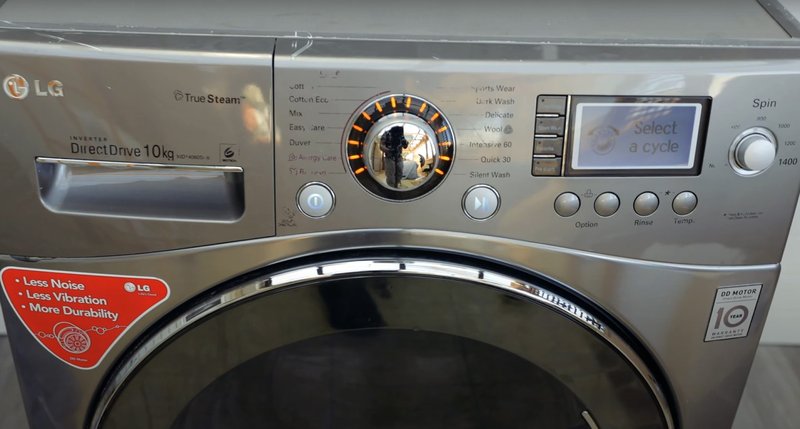
Now, you might be wondering, “Is it dangerous to continue using my dryer with this error?” It’s a good question and one that deserves a clear answer. Using your dryer with an “OE” error isn’t necessarily a direct danger to you, but it can potentially lead to bigger issues if not addressed. It’s a bit like driving a car with the check engine light on—safe for short trips but risky if ignored over time. Not addressing the root cause can lead to more severe damage to your dryer or even your clothes. The key is understanding what this error means and how to tackle it effectively.
Understanding the “OE” Error Code
Before diving into solutions, let’s first get to grips with what the “OE” code on your LG dryer signifies. Simply put, this code is your appliance’s way of waving a red flag and saying, “Hey, there’s an issue with the drainage!” Just like when your sink gets clogged and water starts to pool, your dryer is having trouble expelling the moisture. This can happen for a few reasons, the most common being a drainage hose that’s kinked or blocked, much like a garden hose that’s twisted and stops water from flowing.
Another cause might be a faulty drain pump or a filter that’s clogged with lint, similar to how a vacuum cleaner loses power when its bag is full. The dryer relies on these components working efficiently to properly remove moisture and steam from your clothes. When they don’t, the “OE” message is triggered.
It’s essential you pay attention to this alert because a non-draining dryer can’t dry efficiently. You wouldn’t want to leave your wet clothes in a machine that can’t do its job, as this could lead to mold and mildew. Plus, not addressing it could lead to increased wear and tear on your machine itself.
Potential Risks of Ignoring the “OE” Code
So, what happens if you ignore this error and just keep using your dryer? Well, you might find yourself in a bit of a pickle down the line. One immediate effect could be clothes coming out damp or not drying evenly. Imagine trying to get cozy in a blanket that’s only half-dry—not very pleasant! Your dryer is essentially trying to work overtime to overcome the obstacle, which can lead to overheating.
Over time, continuous operation under stress can cause further wear and tear on your dryer’s components. It’s like running a marathon without proper training or breaks; eventually, something’s bound to give. The drain pump, in particular, can be overworked and may burn out, leading to expensive repairs.
Moreover, any excessive moisture left in your clothes or the machine could start to cause other issues, such as unpleasant odors or even mold, which is not only off-putting but can pose health risks. To prevent this, it’s crucial to address the “OE” error as soon as you observe it.
Steps to Resolve the “OE” Error Code
Okay, let’s talk solutions! So, you’ve got this error code, and it’s time to deal with it. First things first, always unplug the dryer from the power supply before attempting any troubleshooting. Safety first!
Start by checking the drainage hose. Ensure it’s not bent or pinched, as this could be restricting the flow much like a garden hose that’s been stepped on. If the hose appears clogged, gently remove any debris. Next, inspect the drain pump filter; it might be stuffed with lint or small clothing items that slipped through, akin to a lint roller that’s all filled up.
If these basic steps don’t resolve the issue, it might be time to call an appliance technician. They can check the internal workings of the dryer, including the drain pump and associated components, much like a plumber would tackle a stubborn blockage.
Finally, remember that regular maintenance is key. Clean filters and check hoses periodically. This not only prolongs the life of your dryer but also ensures it works efficiently, keeping those pesky error codes at bay. Consider it a small investment of time for peace of mind and dry, fluffy laundry.
Preventive Measures for a Smooth-Running Dryer
Prevention, they say, is better than cure, and this holds true for your LG dryer as well. Regular maintenance can go a long way in keeping error codes from appearing and ensuring that your appliance runs smoothly for years. Think of this like giving your car regular check-ups to keep it in top shape.
Start by routinely cleaning the lint filter after each cycle. It’s a simple task that keeps airflow optimal and significantly reduces the risk of overheating. Imagine trying to breathe through a straw—it’s much easier if it’s not clogged! For the drainage system, periodically check and clean the hoses and drain filters to prevent any blockages. It’s a bit like making sure your gutters are clear before the rainy season to avoid overflowing.
Additionally, try not to overload the dryer. Overpacking it may strain the motor and reduce drying efficiency, similar to how an over-stuffed backpack can make it difficult to zip up and carry comfortably. Always balance loads to allow the dryer to function at its best.
Incorporating these preventive measures into your routine can save you from headaches and costly repairs. Plus, it ensures that each laundry day is smooth and hassle-free. Who wouldn’t want that? Remember, a little effort in maintenance now can save a lot of trouble and expense in the long run.